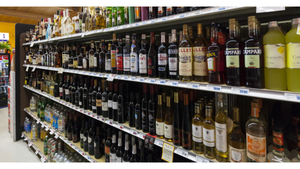NAFEM. 01
ORLANDO, Fla. -- When the biennial convention of the North American Association of Food Equipment Manufacturers convenes here Sept. 7 to 10, supermarket retailers will be among those seeking equipment that can not only produce quality product, but also address a growing number of threats to profitability.The dangers range from the long-standing, such as a lack of experienced labor, to new worries
August 20, 2001
ROBERT VOSBURGH
ORLANDO, Fla. -- When the biennial convention of the North American Association of Food Equipment Manufacturers convenes here Sept. 7 to 10, supermarket retailers will be among those seeking equipment that can not only produce quality product, but also address a growing number of threats to profitability.
The dangers range from the long-standing, such as a lack of experienced labor, to new worries regarding energy consumption and conservation. And, with each new problem added to the list, end users are increasingly calling on manufacturers to provide them with devices that can do the work better, faster and safer.
"NAFEM is the showplace for equipment and supplies if you're an operator and want to see what's new," said John Frishman, show chairman. "Manufacturers typically hold off until this show every other year to introduce new products. And with technology changing so quickly today, a lot can happen in between shows."
Because the event is held every two years, NAFEM is adding a fourth day this year, for the first time. The final day has been dubbed "End User Monday," according to Frishman.
"We added a day when most end users aren't working -- Monday -- so they could have enough time to attend the seminars and still walk the show floor," he said.
Many of the seminars and discussions at NAFEM* 01 are devoted to the old and new challenges facing operators. Frishman, who is also vice president of sales for Boston-based Servolift/Eastern, noted that the focus of every show, and a foundation of the organization itself, is education -- since knowledgeable operators make better customers.
"NAFEM wants to reach down and get the end user because, as an industry, we realize that we can offer them the ultimate place to learn, and they can use that knowledge to make better purchasing decisions," Frishman told SN.
Among the top issues facing end users this year is labor, consistently a problem when it comes to operating specialized food equipment, whether on the processing level or in the store. The industry has steadily been working to make fixtures more labor-friendly and more versatile.
"This industry is really getting ready to bloom technologically," Frishman said. "So, one piece of equipment can now do a bunch of different things, and do it quicker, and return to the operator savings in labor."
Specifically, more end users, including retailers, are realizing the potential in blast-chill technology, long the standard in Europe. The process is only recently finding widespread acceptance in the United States. Among those interested in the technology are supermarket retailers, who have been installing them in stores with high fresh-food volumes.
"One way the end user can get around the labor issue is to go into blast chilling, because then you have a five-to-seven-day shelf life, and you don't have to cook on weekends," Frishman noted.
Energy conservation is one concern that has taken on new importance in recent months, and a large number of manufacturers are re-engineering their lines to cope with customer demands for efficiency.
"Smart end users are going to start asking the manufacturer for energy-saving devices, and looking for equipment that will do more, for less," Frishman said.
He noted that proactive end users don't even have to purchase new equipment if they're interested in energy savings. One of the NAFEM show's strong points always has been its emphasis on maintenance that prevents costly service calls.
"Some of it is simple, like vacuuming out refrigeration coils once a month," said Frishman. "And there's other things, like automatic ignition for gas-fired equipment, timers to turn hoods off and on, and timers to turn equipment off and on in the mornings and evenings, automatically. This is technology that's been around for some time, but now they have to look at it because energy costs are going up."
Food safety is also a key component of every NAFEM show, and this year the discussions range from effective cook-and-hold protocols to designing a realistic and flexible Hazard Analysis Critical Control Point plan.
The 30 sessions comprising NAFEM's educational program are divided between two series, the Foodservice Experts Forum and the Solution Center. The center is located in an area adjacent to the exhibition floor, and includes a fully operational kitchen for live demonstrations.
About the Author
You May Also Like




